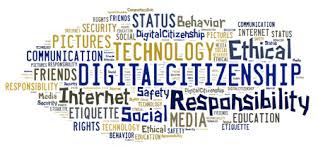So, what does this have to do with feedback? We must first be able to communicate with our students before we can provide feedback. "Students have a positive perception of audio feedback." (Ice, P. 2007) When we give audio feedback (talk) to our students they have a sense that the instructor cares more about them and their worth as a student and future professional. My students each semester have hands on testing where they must perform certain skills related to the subject area we are studying. The use of feedback has shown me that students want to perform the skill correctly. Audio and visual feedback allows for the students to grow and has led to increased retention on sequential tests. Sitting down one on one with the student, leaving video feedback, or audio feedback all though time consuming pays off. The students see that I am committed to their success and in return their effort increases. I have seen increases in my end of year evaluations when using this method as opposed to no feedback or written feedback.
Keys to giving students feedback are:
- Praise and encouragement is better than criticism and punishment (Johansson, J. 2017)
- Feedback should be relevant, immediate, factual, helpful, confidential, respectful, and tailored (Johansson, J. 2017)
- Let the students be involved. Have them first assess themselves (Branch Jr, W.T. and Paranjape, A. 2002)
- Feedback is most valuable when gathered from multiple sources and when it comes from someone who is perceived as credible, knowledgeable, and well intentioned (Brinko, K.T. 1993)
As educators we must also be able to accept feedback. Just like our students in order for growth to occur we must be able to self-evaluate, take feedback from our peers, and swallow our ego and take and apply feedback from our students.
Watch this video on the importance of getting feedback from students:
https://www.youtube.com/watch?v=zLY5buOkS7c
Let's all remember that as much as our students need feedback, we do as professionals, and in order to grow and continue to thrive we must strap on those communication skills and be the best educators we can be!
Resources:
| Ice, P., Curtis, R., Phillips, P., & Wells, J. (2007). Using asynchronous audio feedback to enhance teaching presence and students' sense of community. Journal of Asynchronous Learning Networks, 11(2), 3-25. |
| Branch Jr, W. T., & Paranjape, A. (2002). Feedback and reflection: teaching methods for clinical settings. Academic Medicine, 77(12, Part 1), 1185-1188. |
| Quinton, S., & Smallbone, T. (2010). Feeding forward: using feedback to promote student reflection and learning–a teaching model. Innovations in Education and Teaching International, 47(1), 125-135. |
| Kember, D., Leung, D. Y., & Kwan, K. (2002). Does the use of student feedback questionnaires improve the overall quality of teaching?. Assessment & Evaluation in Higher Education, 27(5), 411-425. |
| Brinko, K. T. (1993). The practice of giving feedback to improve teaching: What is effective?. The Journal of Higher Education, 64(5), 574-593. |



















